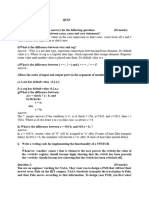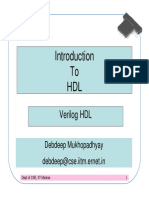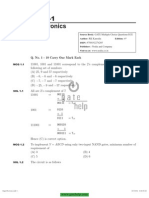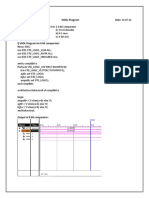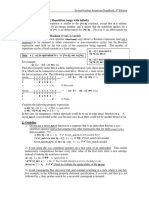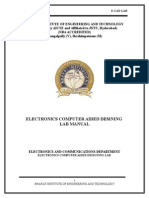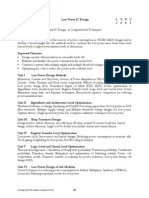0% found this document useful (0 votes)
203 views36 pagesVerilog HDL for Engineers
The document discusses RTL modeling in Verilog. It describes how RTL modeling uses continuous assignments to model combinational logic in a hardware-like way without specifying individual gates. Continuous assignments constantly update the left-hand side value based on changes to the right-hand side expression. The document provides examples of modeling a full adder and combining RTL with structural modeling. It also covers various Verilog operators that can be used in continuous assignments.
Uploaded by
Vinh ĐứcCopyright
© © All Rights Reserved
We take content rights seriously. If you suspect this is your content, claim it here.
Available Formats
Download as PDF, TXT or read online on Scribd
0% found this document useful (0 votes)
203 views36 pagesVerilog HDL for Engineers
The document discusses RTL modeling in Verilog. It describes how RTL modeling uses continuous assignments to model combinational logic in a hardware-like way without specifying individual gates. Continuous assignments constantly update the left-hand side value based on changes to the right-hand side expression. The document provides examples of modeling a full adder and combining RTL with structural modeling. It also covers various Verilog operators that can be used in continuous assignments.
Uploaded by
Vinh ĐứcCopyright
© © All Rights Reserved
We take content rights seriously. If you suspect this is your content, claim it here.
Available Formats
Download as PDF, TXT or read online on Scribd
/ 36








